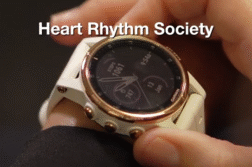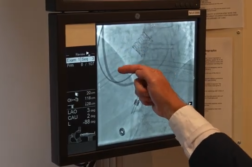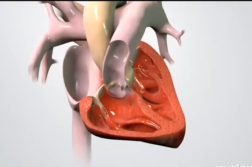DALLAS. (Ivanhoe Newswire) — Every year more than 735,000 Americans have a heart attack. Heart disease kills 600,000 Americans. Now, breakthrough technology that is helping detect heart disease in a fraction of a second -and saving lives.
Mary Rademacher knew she was having a problem with her heart.
“I could feel my heart beating, I noticed some things weren’t quite right, I noticed some irregularity, I would feel tired; sometimes faint,” described Rademacher.
Instead of an invasive heart catheterization, doctors had a new noninvasive tool at their disposal; a 256-slice CT scanner. It takes 4-dimensional high definition images in about one-third of a second, with one pass around the heart. Some older systems take up to 16 rotations.
Ambarish Gopal, MD, the medical director of Advanced Cardiovascular Imaging CT Program at Heart Hospital Baylor Plano, told Ivanhoe, “We have great quality images with much less radiation. This probably might be the single most powerful test because we are not only able to look at the plumbing system of the heart, we can look at the whole cardiac system, including the cardiac valves.”
The new scanner can see calcium buildup inside the coronary, even before people have symptoms. The imaging ruled out blockage. Rademacher’s arrhythmia was fixed with medicine and a minor procedure.
“It is a life saver, and it’s so simple,” said Rademacher.
Dr. Gopal detailed, “It does save lives because if you do find early plaque formations, calcium buildup, we are able to identify early coronary artery disease.”
This can lead to lifestyle changes that can reduce coronary artery disease and save lives.
The Heart Hospital in Texas is offering the new CT coronary calcium score along with diagnosis for only $79. So far it is not reimbursed by insurance.
Contributors to this news report include: Cyndy McGrath, Supervising Producer; Don Wall, Field Producer; Milvionne Chery, Assistant Producer; Tony D’Astoli, Editor; Mark Montgomery, Videographer.
MEDICAL BREAKTHROUGHS
RESEARCH SUMMARY
TOPIC: New Scan Saves Hearts
REPORT: MB # 4149
BACKGROUND: Heart disease is the leading cause of death for both men and women. About 735,000 people have a heart attack every year in the United States and 600,000 people die from it. Coronary heart disease is the most common type of heart disease, killing over 370,000 people annually. Coronary heart disease is caused by plaque buildup in the walls of the arteries that supply blood to the heart and other parts of the body. Too much plaque buildup can cause the inside of the arteries to become narrow and make it difficult for blood to flow through a person’s body.
(Source: http://www.cdc.gov/heartdisease/facts.htm)
HEART CATHETERIZATION: The earlier heart disease is detected, the easier it is to treat. Thus, doctors may recommend a heart catheterization for patients to determine their risk for heart disease. During the procedure, a thin, hollow tube called a catheter is inserted into a large blood vessel that leads to the heart. Through the procedure, the pressure and blood flow in the heart can be measured. A contrast dye visible in X-rays is injected through the catheter and x-ray images show the dye as it flows through the heart arteries. This contrast dye shows where arteries are blocked. After the procedure, the patient will go to a recovery room for a few hours where they will have you lie flat. Heart catheterization is usually very safe and only a small number of people have minor problems. Some develop bruises where the catheter had been inserted and the contrast dye that makes the arteries show up on X-rays causes some people to feel sick to their stomachs, get itchy or develop hives.
(Source: http://www.heart.org/HEARTORG/Conditions/HeartAttack/SymptomsDiagnosisofHeartAttack/Cardiac-Catheterization_UCM_451486_Article.jsp#.V8CrTvkrIdU)
NEW TECHNOLOGY: A heart scan, also known as a coronary calcium scan, is a noninvasive way to determine a person’s risk of developing heart disease. A heart scan is a specialized X-ray test that provides pictures of a person’s heart that can enable a doctor to detect and measure calcium-containing plaque in the arteries. The newest and most powerful heart scan is the 256-slice CT scanner. It takes 4D images of the heart in under one second with only one pass of the heart. With this scanner doctors can look at the whole cardiac system, including the cardiac valves. Compared to heart catheterization, heart scans are not a procedure so there is no recovery time.
(Source: Ambarish Gopal, MD)
FOR MORE INFORMATION ON THIS REPORT, PLEASE CONTACT:
Susan Hall
Public Relations
If this story or any other Ivanhoe story has impacted your life or prompted you or someone you know to seek or change treatments, please let us know by contacting Marjorie Bekaert Thomas at mthomas@ivanhoe.com




